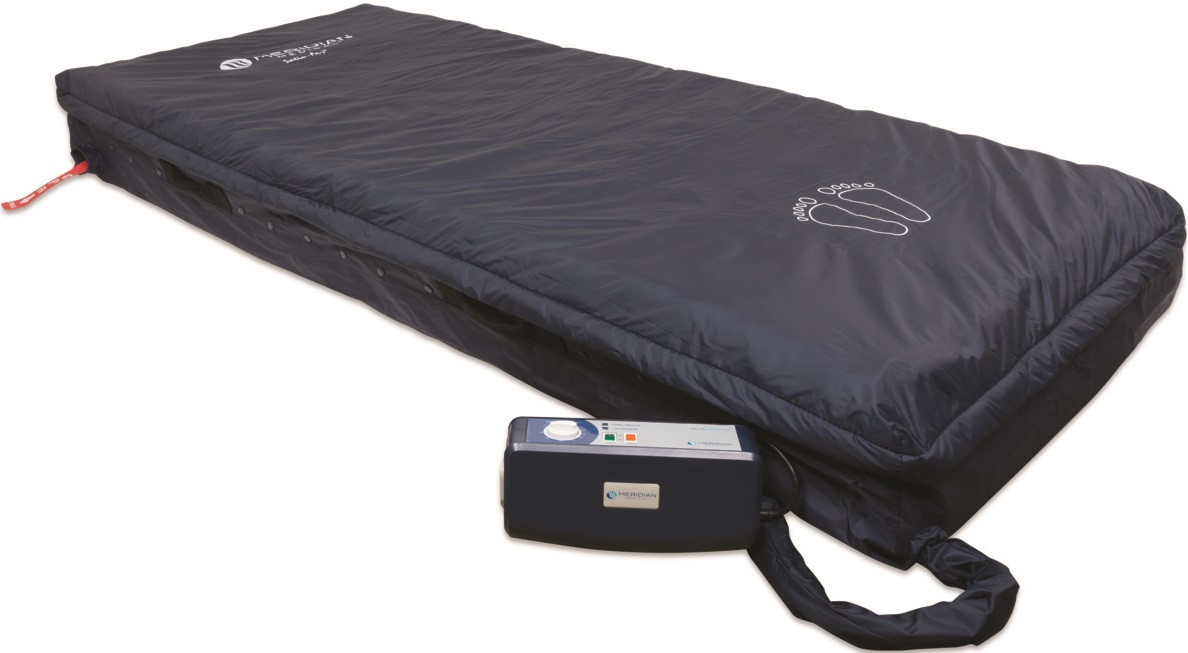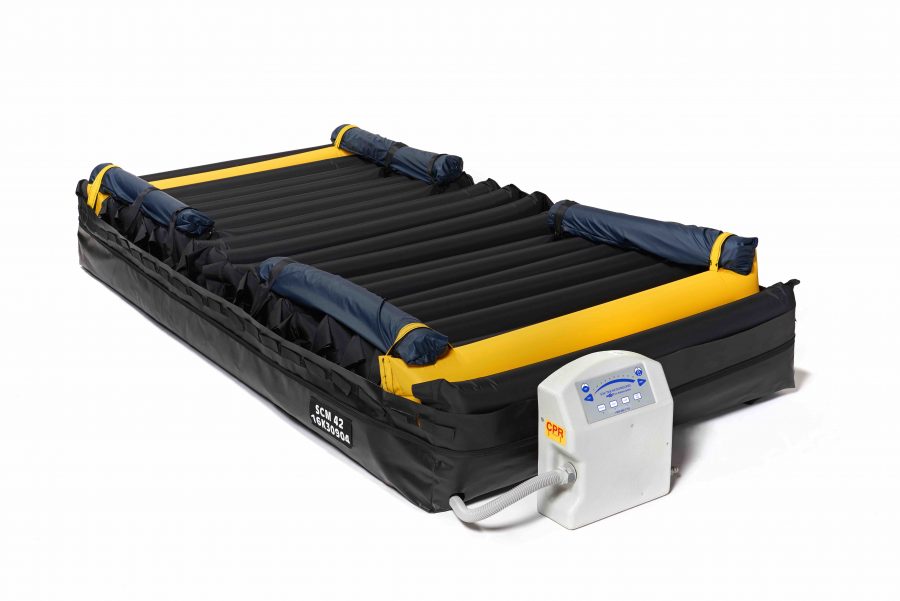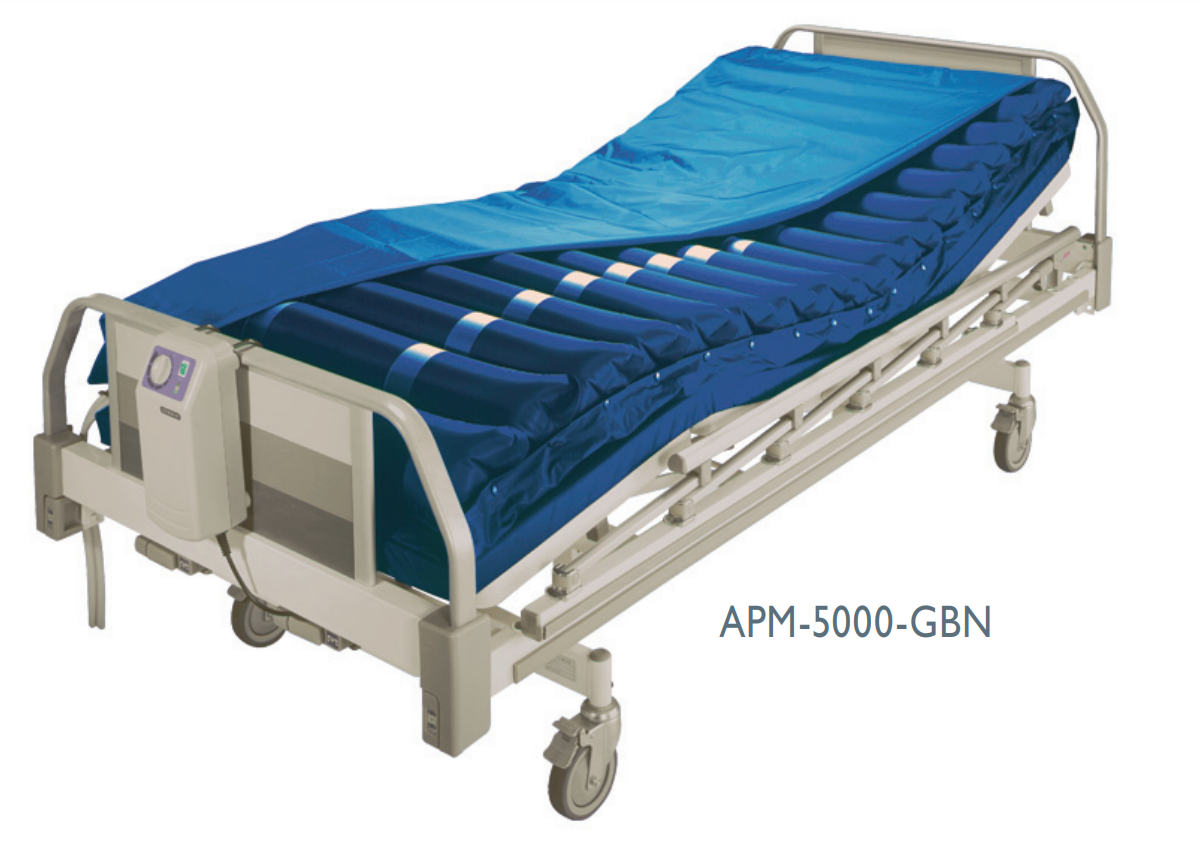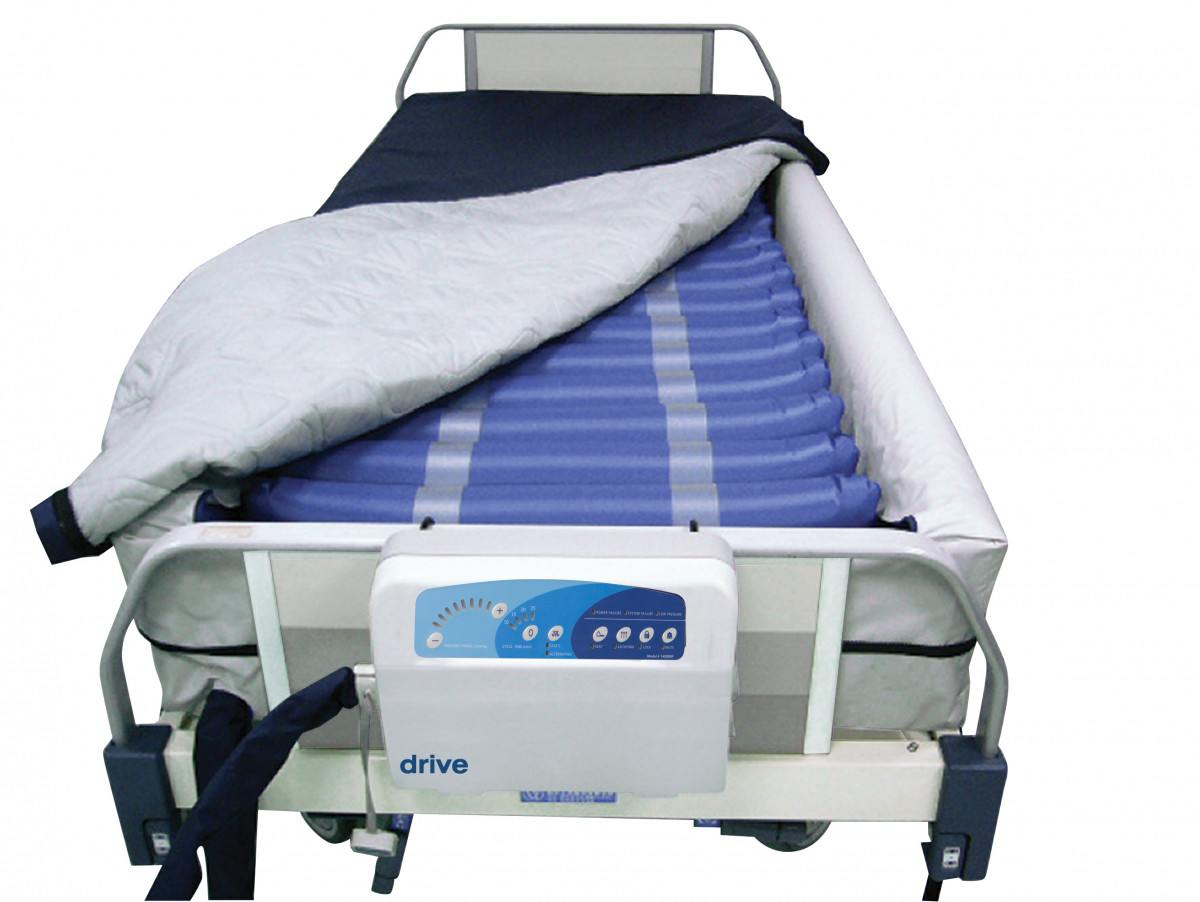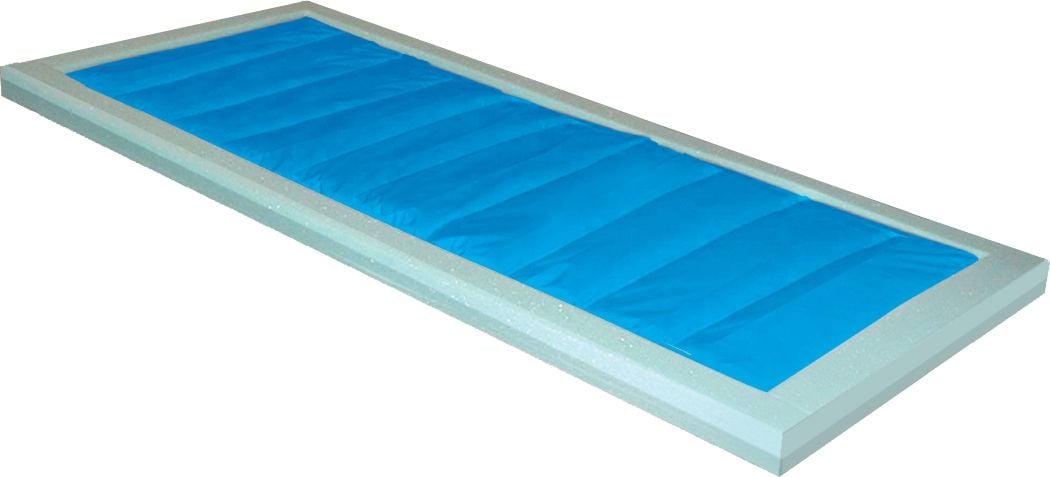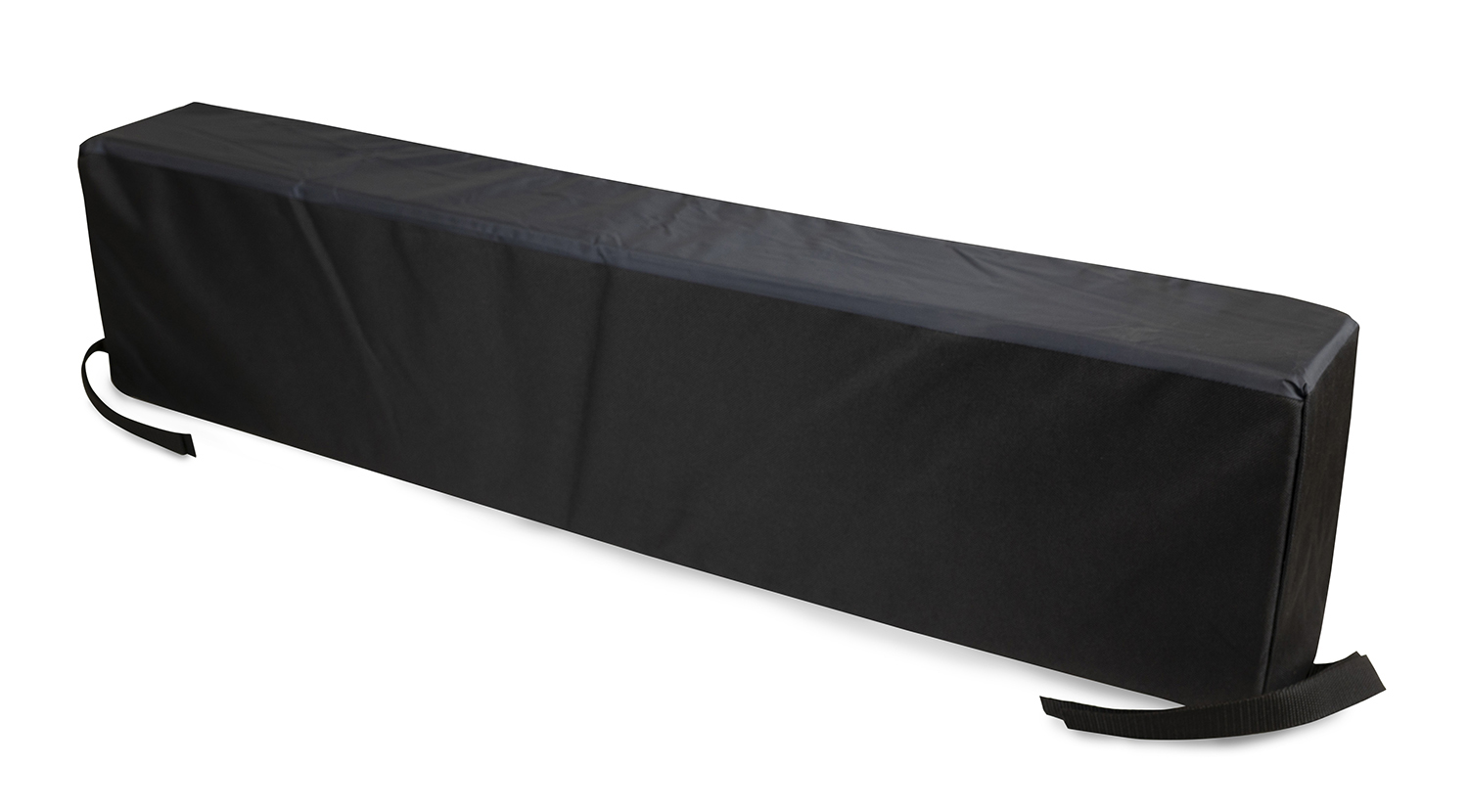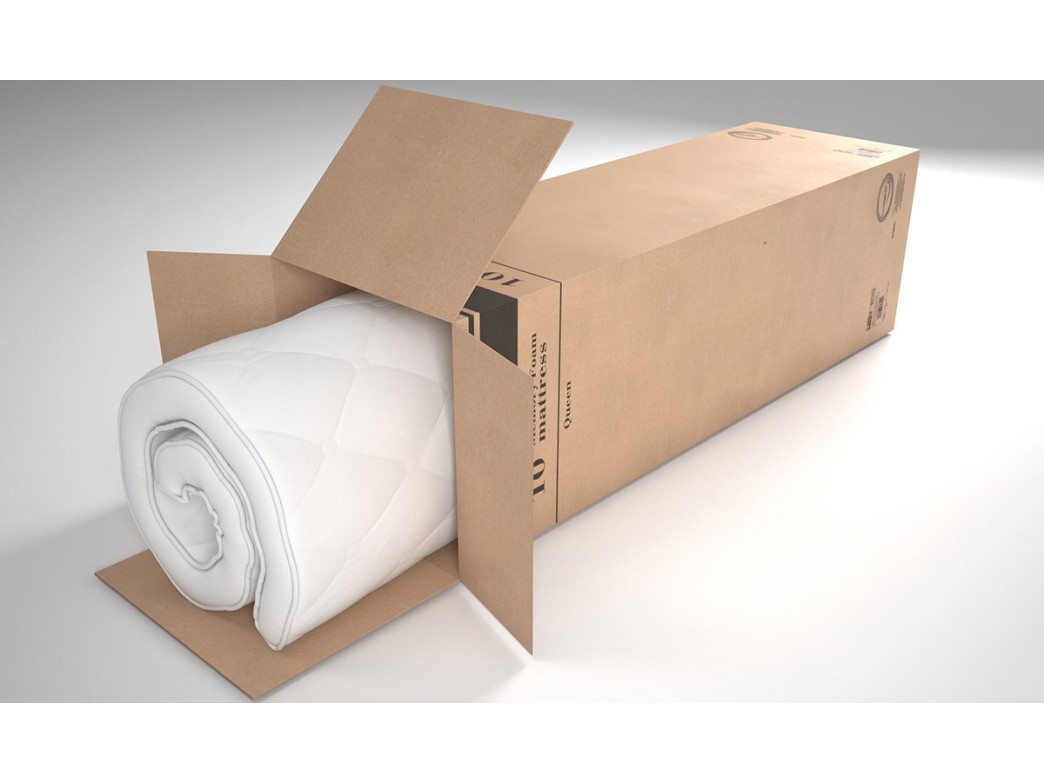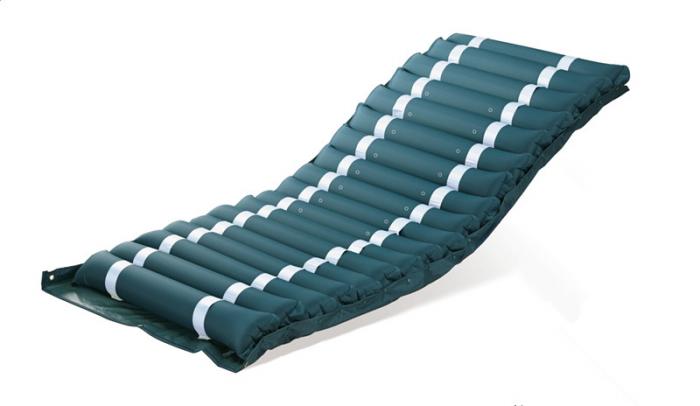An alternating pressure mattress is a type of therapeutic hospital bed mattress that is designed to relieve pressure on the body by constantly changing the pressure points. This is achieved through a series of air cells that inflate and deflate in a cyclical pattern, providing a gentle massaging effect. This type of mattress is ideal for patients who are at risk of developing pressure ulcers or bed sores, as it helps to improve blood circulation and prevent skin breakdown. One of the main benefits of an alternating pressure mattress is its ability to reduce pressure on specific areas of the body, such as the heels, hips, and shoulders. This can be especially beneficial for patients who are bedridden or have limited mobility, as it helps to distribute their weight evenly and prevent the development of pressure ulcers. The constant movement of the air cells also helps to stimulate the muscles, reducing the risk of muscle atrophy and improving overall comfort.1. Alternating Pressure Mattress
A low air loss mattress is designed to provide a continuous flow of air through the mattress, keeping the patient cool and dry while also promoting healing and preventing the development of pressure ulcers. This type of mattress is made up of multiple air chambers that are filled with small holes, allowing the air to circulate and prevent moisture build-up. This is particularly beneficial for patients who are unable to control their body temperature, as it helps to regulate their body heat and prevent them from becoming too hot or too cold. Low air loss mattresses are also beneficial for patients who are at risk of developing pressure ulcers, as the constant flow of air helps to reduce pressure on the body and promote healing. The pressure can be adjusted to suit the individual needs of the patient, making it a versatile option for different types of patients. This type of mattress is also easy to clean and maintain, making it a practical choice for healthcare facilities.2. Low Air Loss Mattress
A pressure redistribution mattress is designed to evenly distribute the weight of the patient across the surface of the mattress, reducing pressure on specific areas of the body. This is achieved through the use of specialized foam or air cells that conform to the shape of the patient's body and provide support where it is needed most. This type of mattress is particularly beneficial for patients who are unable to reposition themselves, as it helps to prevent the development of pressure ulcers. One of the main advantages of a pressure redistribution mattress is its ability to reduce the risk of pressure ulcers while also providing comfort and support for the patient. It can also help to improve blood circulation and prevent the development of other medical conditions, such as muscle atrophy and joint stiffness. This type of mattress is commonly used in intensive care units and long-term care facilities, where patients are at a high risk of developing pressure ulcers.3. Pressure Redistribution Mattress
A bariatric mattress is specifically designed for patients who are overweight or obese, providing extra support and cushioning to accommodate their higher body weight. These mattresses are typically wider and stronger than standard hospital bed mattresses, with a weight capacity of up to 1000 pounds. They also come in different sizes to fit the individual needs of the patient. One of the main benefits of a bariatric mattress is its ability to provide comfort and support for patients who are overweight or obese. This can help to reduce the risk of pressure ulcers and other medical conditions, such as joint pain and muscle atrophy. Bariatric mattresses are also designed to be durable and long-lasting, making them a cost-effective option for healthcare facilities.4. Bariatric Mattress
A gel overlay mattress is made up of a gel-filled pad that is placed on top of a traditional hospital bed mattress. This gel pad conforms to the shape of the patient's body, providing support and cushioning to reduce pressure on specific areas. It also helps to distribute the patient's weight evenly, reducing the risk of pressure ulcers and promoting comfort. Gel overlay mattresses are commonly used in conjunction with other types of therapeutic mattresses, such as alternating pressure or low air loss mattresses. They are also beneficial for patients who are at a high risk of developing pressure ulcers, as the gel pad helps to reduce pressure and friction on the skin. This can be particularly beneficial for patients who are bedridden or have limited mobility.5. Gel Overlay Mattress
A memory foam mattress is made from a specialized type of foam that responds to the body's heat and weight, conforming to the shape of the individual and providing customized support. This type of mattress is particularly beneficial for patients who have chronic pain or medical conditions, as it helps to relieve pressure on the body and improve spinal alignment. One of the main benefits of a memory foam mattress is its ability to provide personalized support for the individual, making it a popular choice for patients who have unique medical needs. It also helps to reduce pressure on specific areas of the body, which can be beneficial for patients who are at risk of developing pressure ulcers. Memory foam mattresses are also durable and long-lasting, making them a cost-effective option for healthcare facilities.6. Memory Foam Mattress
An anti-decubitus mattress is designed to prevent the development of pressure ulcers by providing support and cushioning to reduce pressure on the body. It is made up of air cells or foam that can be adjusted to suit the individual needs of the patient. This type of mattress is commonly used for patients who are bedridden or have limited mobility, as it helps to prevent skin breakdown and promote comfort. One of the main benefits of an anti-decubitus mattress is its ability to reduce the risk of pressure ulcers, which can be a common problem for patients who are confined to a bed for long periods of time. It can also help to improve blood circulation and prevent the development of other medical conditions, such as muscle atrophy and joint stiffness. This type of mattress is also easy to clean and maintain, making it a practical choice for healthcare facilities.7. Anti-Decubitus Mattress
An air fluidized mattress is a specialized type of therapeutic mattress that is filled with tiny beads that move and mold to the shape of the patient's body. This creates a floating sensation that helps to reduce pressure on the body and promote comfort. It is commonly used for patients who have severe burns or other skin conditions, as it helps to prevent skin breakdown and promote healing. One of the main benefits of an air fluidized mattress is its ability to provide a completely pressure-free environment for the patient, which can be beneficial for those with severe skin conditions or burns. The constant movement of the beads also helps to stimulate the muscles and improve blood circulation, which can aid in the healing process. However, this type of mattress may not be suitable for all patients and should be used under the guidance of a healthcare professional.8. Air Fluidized Mattress
A lateral rotation mattress is designed to gently rotate the patient from side to side, helping to prevent pressure ulcers and promote healing. This type of mattress is made up of multiple air cells that can be inflated and deflated in a cyclical pattern, providing a gentle rocking motion that mimics the natural movement of the body. It is commonly used for patients who are unable to reposition themselves, as it helps to prevent skin breakdown and improve overall comfort. One of the main benefits of a lateral rotation mattress is its ability to reduce the risk of pressure ulcers, which can be a common problem for patients who are unable to move on their own. It can also help to improve blood circulation and prevent the development of other medical conditions, such as muscle atrophy. This type of mattress is also easy to use and can be adjusted to suit the individual needs of the patient.9. Lateral Rotation Mattress
A therapeutic support surface refers to any type of mattress or overlay that is designed to provide support and comfort for patients who are at risk of developing pressure ulcers or have other medical conditions. This can include alternating pressure, low air loss, pressure redistribution, and other types of mattresses. The goal of a therapeutic support surface is to reduce pressure on the body and promote healing, making it a vital tool in the prevention and treatment of pressure ulcers. One of the main benefits of a therapeutic support surface is its versatility, as it can be customized to suit the individual needs of the patient. It is also a cost-effective option for healthcare facilities, as it can be used for a variety of patients and medical conditions. Therapeutic support surfaces are an essential part of providing quality care for patients and promoting their overall well-being.10. Therapeutic Support Surface
The Importance of a Therapeutic Hospital Bed Mattress for Patients

Comfort and Support for Healing
 When it comes to designing a hospital room, one of the most important aspects to consider is the bed and its mattress. For patients who are already dealing with illness or injury, the right
therapeutic hospital bed mattress
can make a significant difference in their comfort and healing. This is why healthcare facilities are increasingly investing in high-quality mattresses that offer both comfort and support.
When it comes to designing a hospital room, one of the most important aspects to consider is the bed and its mattress. For patients who are already dealing with illness or injury, the right
therapeutic hospital bed mattress
can make a significant difference in their comfort and healing. This is why healthcare facilities are increasingly investing in high-quality mattresses that offer both comfort and support.
Pressure Relief and Prevention of Bedsores
 For patients who are immobile or have limited mobility, lying in bed for extended periods of time can put pressure on certain areas of the body, leading to
bedsores
. These painful ulcers can be a major setback in the healing process and can even lead to further health complications. A
therapeutic hospital bed mattress
is designed to distribute pressure evenly and reduce the risk of bedsores, allowing patients to rest and heal comfortably.
For patients who are immobile or have limited mobility, lying in bed for extended periods of time can put pressure on certain areas of the body, leading to
bedsores
. These painful ulcers can be a major setback in the healing process and can even lead to further health complications. A
therapeutic hospital bed mattress
is designed to distribute pressure evenly and reduce the risk of bedsores, allowing patients to rest and heal comfortably.
Customized for Individual Needs
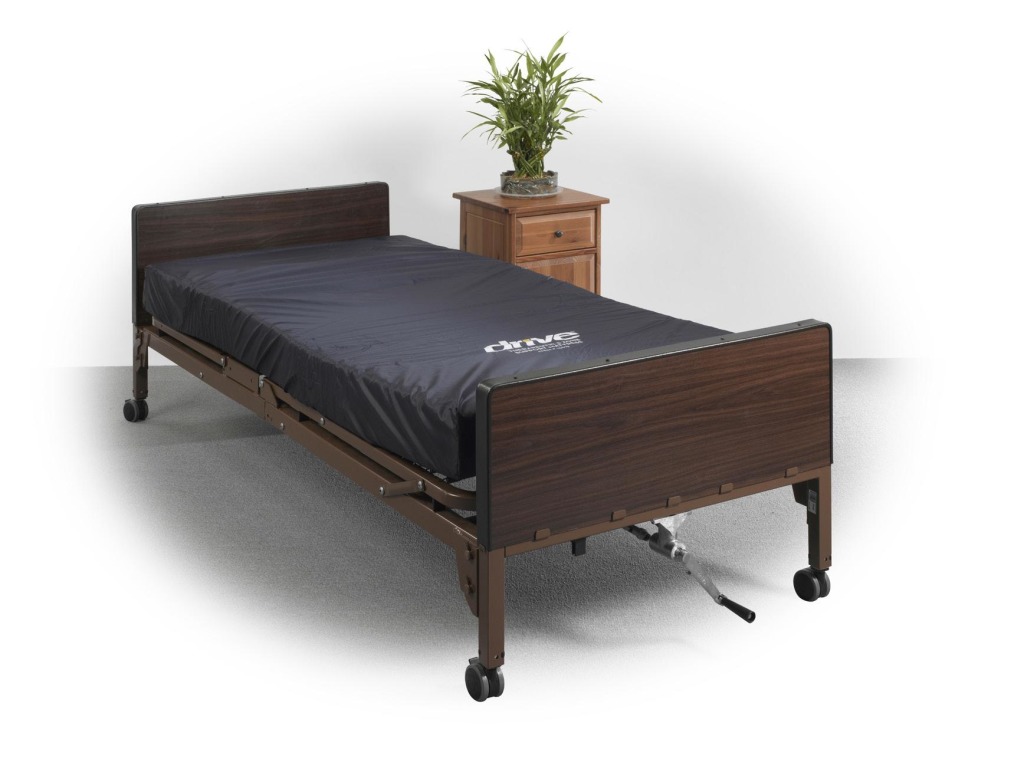 Not all patients have the same needs when it comes to their mattress. Some may require more support for their back, while others may need extra cushioning for their joints. A
therapeutic hospital bed mattress
can be customized to meet the individual needs of each patient, ensuring maximum comfort and support. This can be especially beneficial for patients with chronic pain or conditions that affect their sleep.
Not all patients have the same needs when it comes to their mattress. Some may require more support for their back, while others may need extra cushioning for their joints. A
therapeutic hospital bed mattress
can be customized to meet the individual needs of each patient, ensuring maximum comfort and support. This can be especially beneficial for patients with chronic pain or conditions that affect their sleep.
Improved Sleep Quality
 Sleep is crucial for the healing process, and a
therapeutic hospital bed mattress
can greatly improve the quality of sleep for patients. With its ability to reduce pressure and provide customized support, patients are more likely to get the restful sleep they need to recover. This can also lead to a faster recovery time and improved overall well-being.
In conclusion, a
therapeutic hospital bed mattress
is an essential component of a well-designed healthcare facility. Not only does it provide comfort and support for patients, but it also plays a crucial role in their healing process. With its ability to relieve pressure, prevent bedsores, and improve sleep quality, investing in a high-quality therapeutic mattress is a must for any healthcare facility looking to provide the best care for their patients.
Sleep is crucial for the healing process, and a
therapeutic hospital bed mattress
can greatly improve the quality of sleep for patients. With its ability to reduce pressure and provide customized support, patients are more likely to get the restful sleep they need to recover. This can also lead to a faster recovery time and improved overall well-being.
In conclusion, a
therapeutic hospital bed mattress
is an essential component of a well-designed healthcare facility. Not only does it provide comfort and support for patients, but it also plays a crucial role in their healing process. With its ability to relieve pressure, prevent bedsores, and improve sleep quality, investing in a high-quality therapeutic mattress is a must for any healthcare facility looking to provide the best care for their patients.














